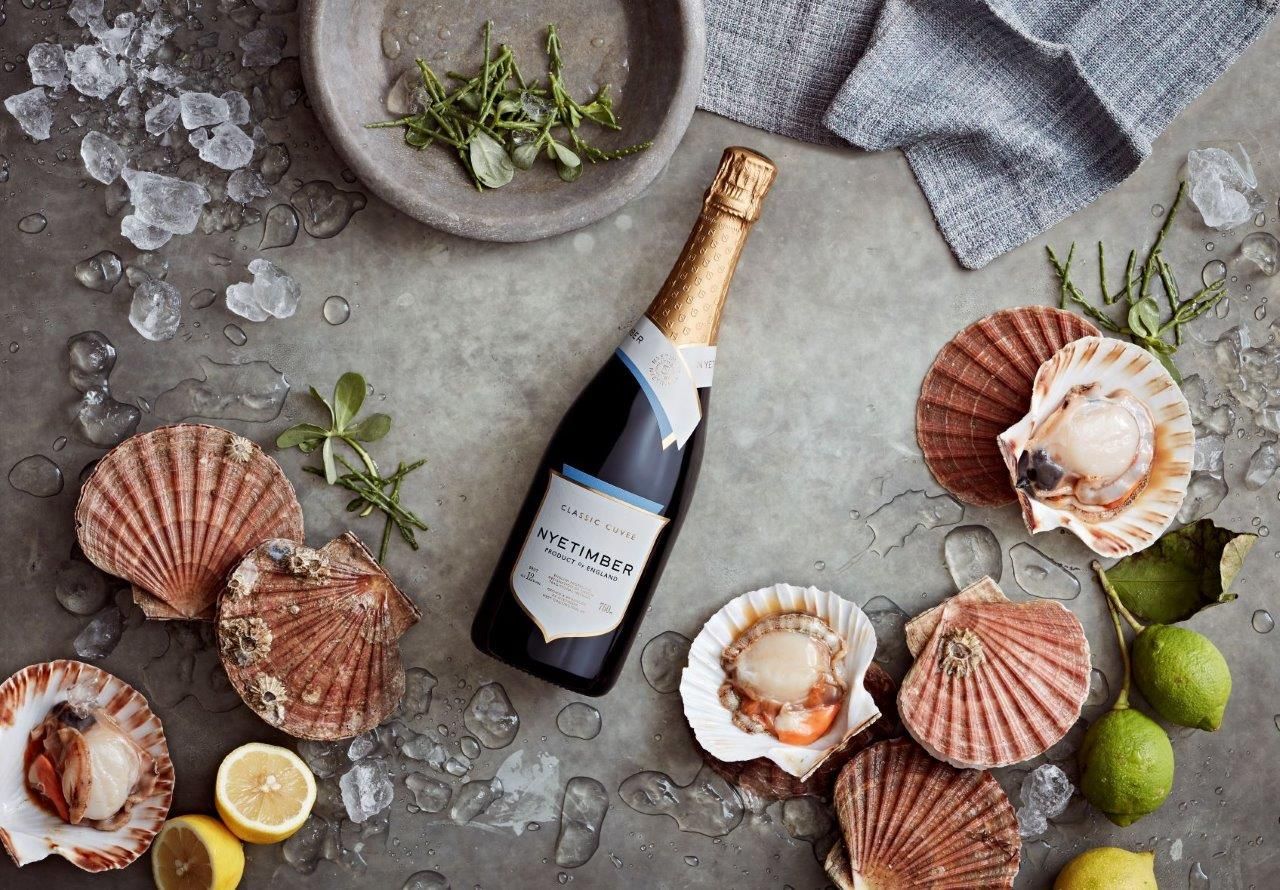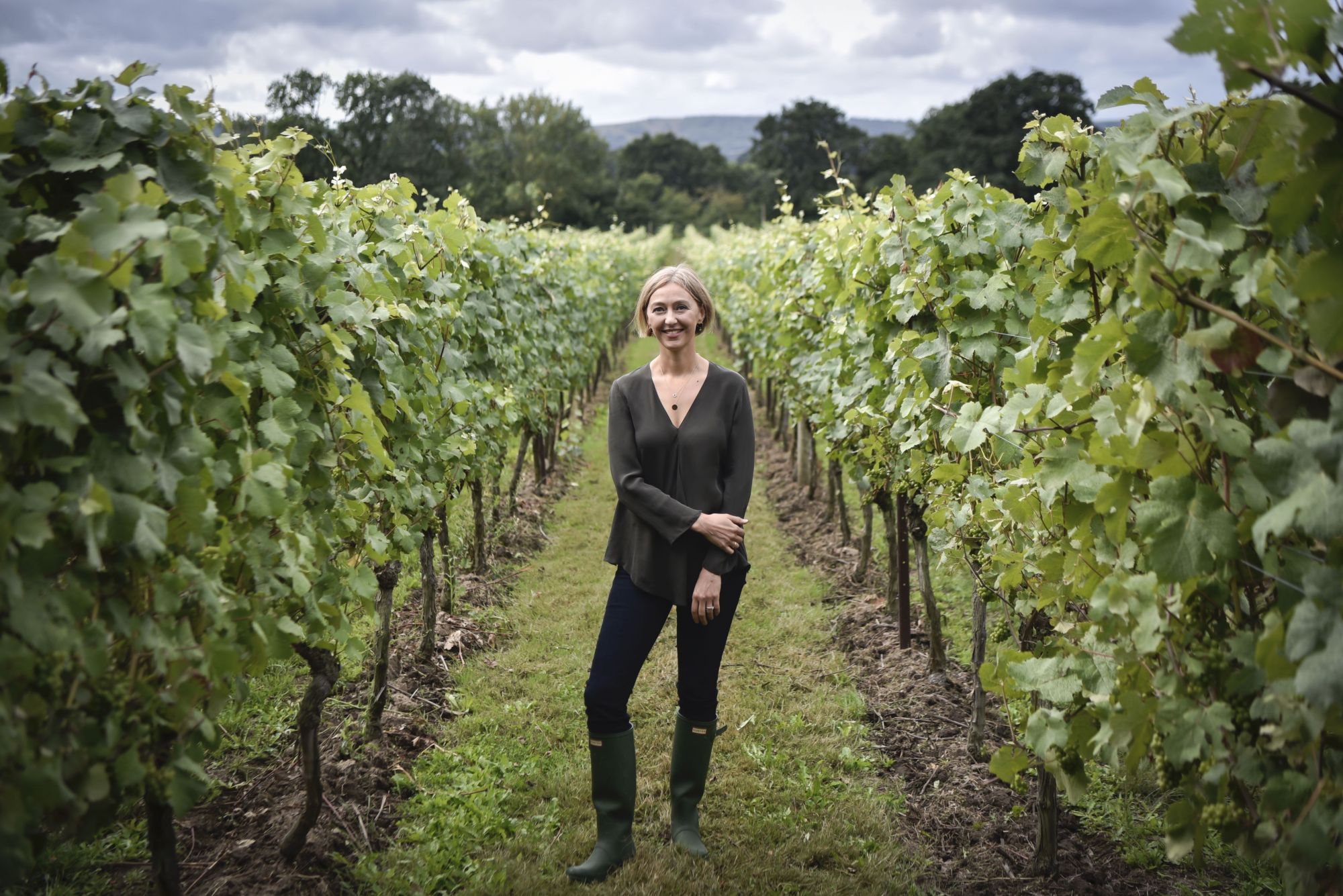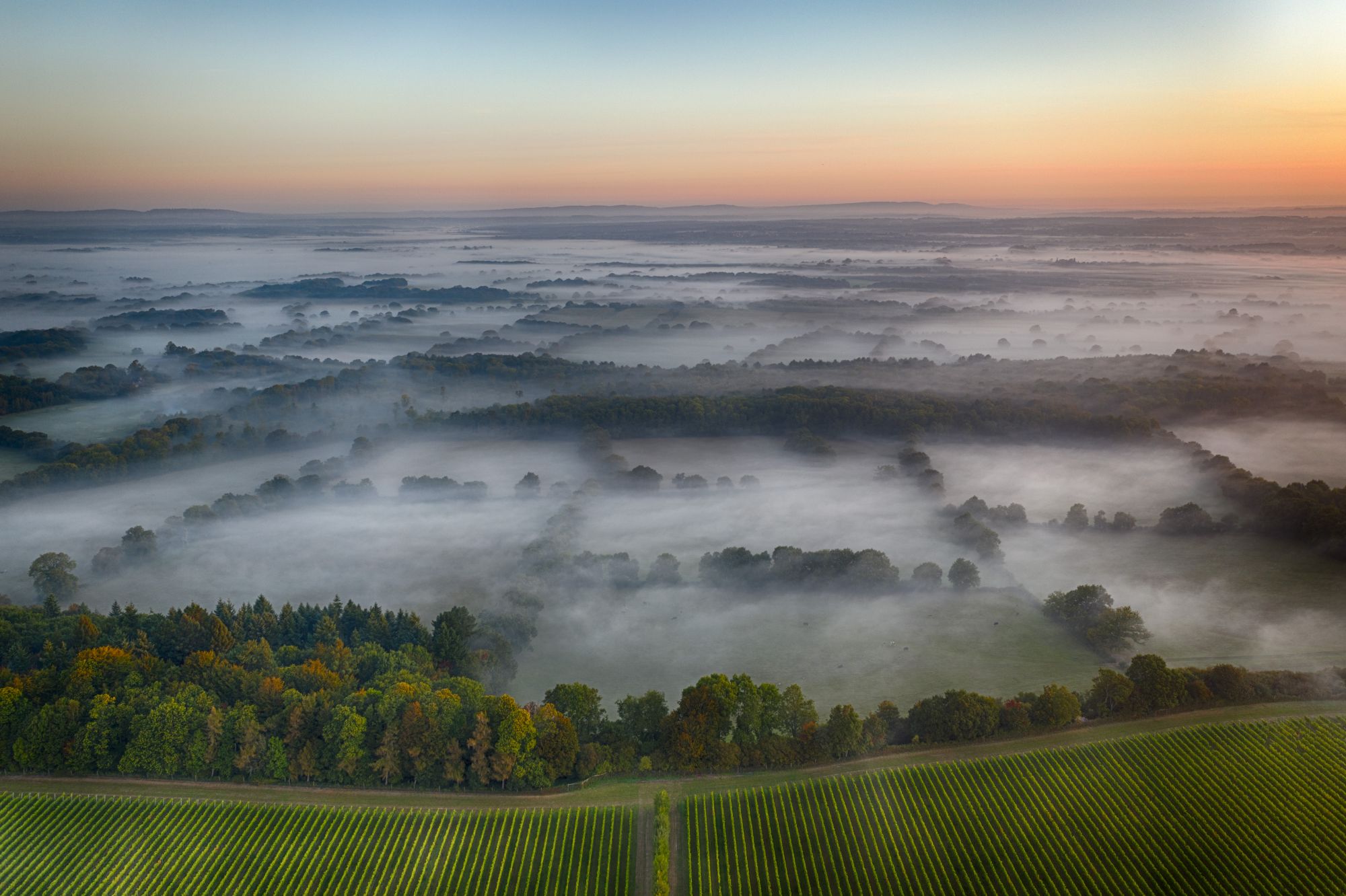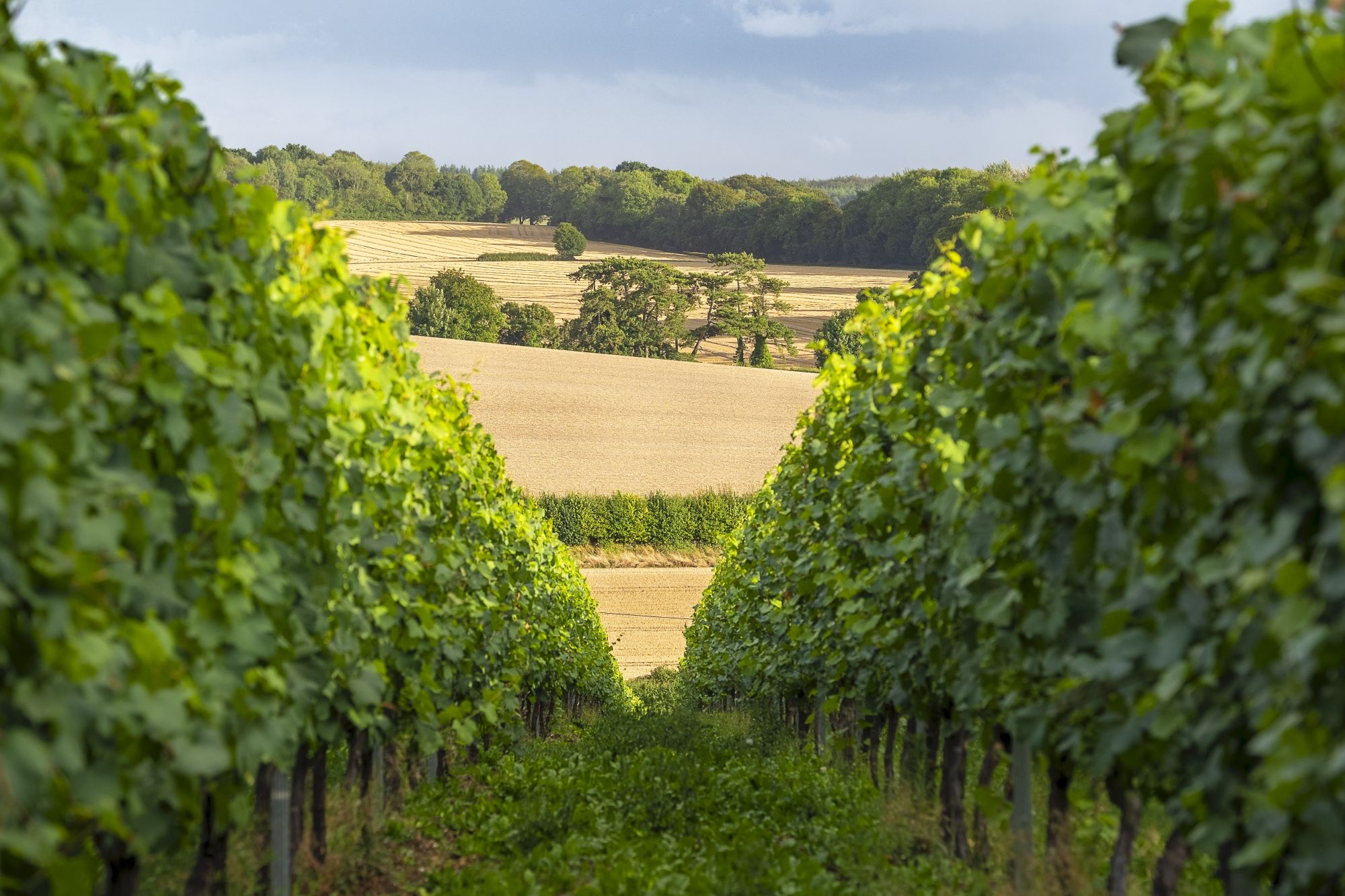It’s hard to predict how climate change will alter the global winemaking map, but the United Kingdom’s largest sparkling wine producer is not wasting any time making the most of its natural advantages
While the Nyetimber estate in West Sussex can be traced back to the Domesday Book of 1086, almost 1,000 years ago, the first vines were only planted some 900 years later, in 1988. That said, its current owner Eric Heerema, who took over in 2006, and the talented winemaking couple of head winemaker Cherie Spriggs and winemaker Brad Greatrix he had recruited, are now realising a shared vision of crafting the finest English sparkling wines they’ve always believed the estate can produce.
Made using estate-grown Chardonnay, Pinot Noir and Pinot Meunier, it also took a unique approach to blending the varied qualities each block boasts to achieve the bright and elegantly complex wines Nyetimber is now known to make, be it its Classic Cuvee, Blanc de Blancs or its textured and generous Rosé. “We own all our vineyards, and to take advantage of that, we need to understand the nuance that all of our fields and all of our blocks provide,” Greatrix tells T.Dining Singapore during a visit to the estate in October to mark its 2019 harvest.
(Related: 9 Of The Best Wines From Canada And Northern Europe To Try)

“For any batch of grapes that gives us a distinct flavour—and that could be a technical reason, like a clone or a rootstock, or it could just be that we know that the top of the slope gives a different characteristic from those at the bottom of slope, those get picked separately.” As such, while Nyetimber's portfolio has only a handful of wines, at harvest, the estate produces around 100 of these “different wines” that Spriggs and Greatrix work with.
The current harvest was a generous one, says Greatrix, and the team hopes to produce as many as a million bottles. This is not as many as they were able to do last year (2018), but the fact is that Nyetimber aims to only produce wines when the harvest is good.
In doing so, the house has garnered much acclaim in a relatively short number of years. And while the issue of global warming has certainly impacted much of the global production of sparkling wines—most notably in Champagne, France—the effects on the vineyards in this part of the UK are quite different for a number of reasons.
(Related: 5 Exceptional Springtime Wines)




